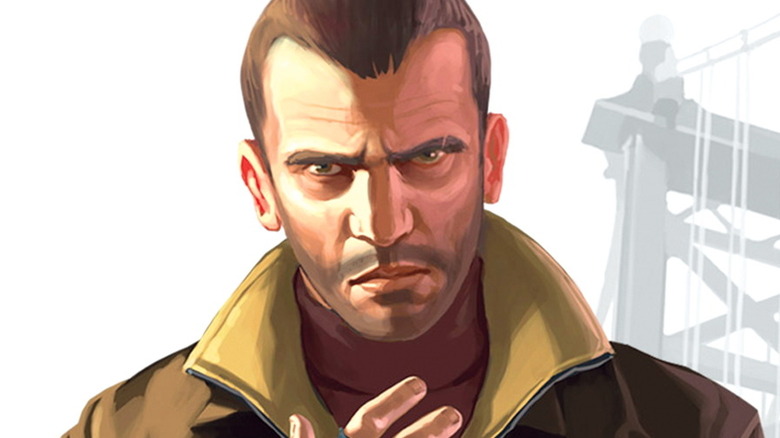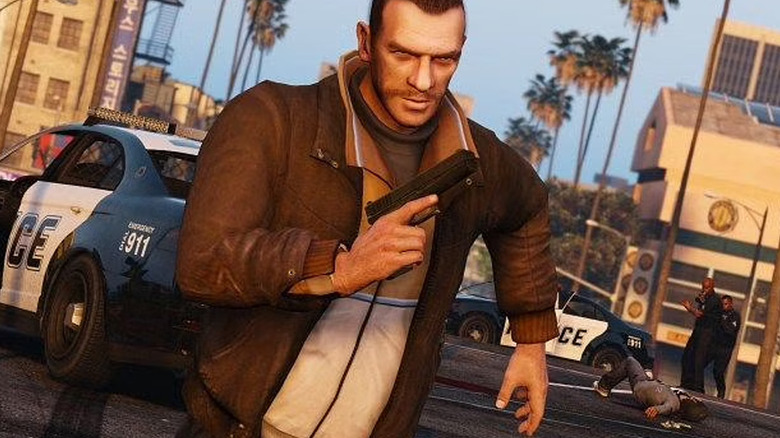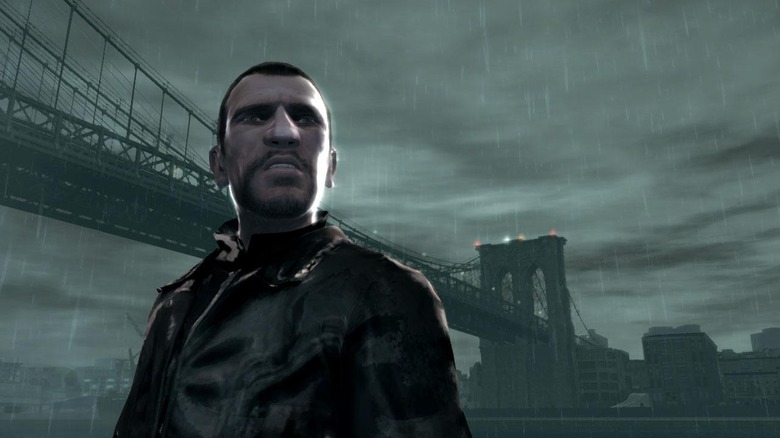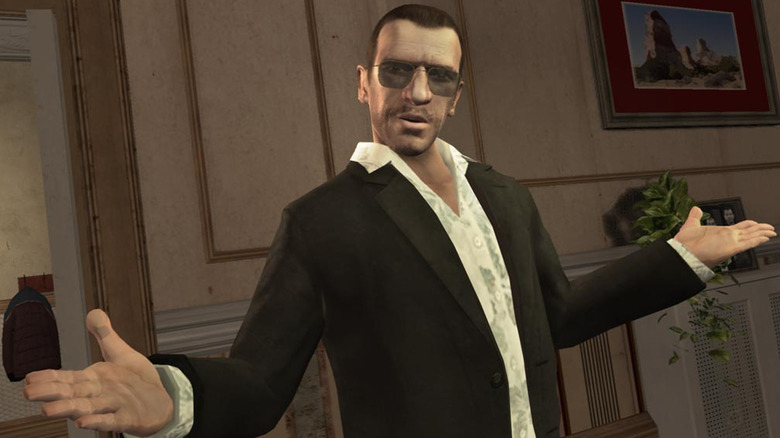The Biggest Problem With GTA 4's Niko Bellic
"GTA 4" and its protagonist, Niko Bellic, are undoubtedly highlights of the "Grand Theft Auto" series. The game is often ranked as the absolute best of the franchise and Bellic, while not the most popular main character, still gets plenty of support from fans. The story of a man trying to escape his dark past only to be drawn into a life of crime and violence resonated with gamers and made "GTA 4" a hit. This success, however, doesn't mean the game and its star are perfect.
Despite the strength of the narrative and writing, many fans have pointed out issues with Bellic as a character. Specifically, they've taken issue with seeming contradictions in how he is portrayed in the story compared to how he's portrayed in gameplay. This, some argue, leads to a muddling of the story's themes and detracts from Bellic's character.
To understand this argument, it's necessary to be familiar with the concept of ludonarrative dissonance.
Ludonarrative dissonance
Ludonarrative dissonance is a term invented by game developer Clint Hocking in an article he wrote critiquing the original "Bioshock" in 2007. Drawing on the Latin word for sports and play, ludo, he used the term to mean some sort of conflict or dissonance between the themes and ideas presented in the gameplay and those presented in the story. Hocking argued that "Bioshock" featured just such a conflict and the term came to be adopted and used by more and more fans and game critics when discussing various titles.
Proposed examples of ludonarrative dissonance have included the 2013 reboot of "Tomb Raider," which features a story based on the idea that Lara Croft is young, inexperienced, and unprepared for the dangers that await her while gameplay involves the same character easily scaling mountains and dispatching hordes of foes. Another example is "Last of Us 2," which features themes built around how terrible violence and revenge are but has gameplay that encourages doing as much violence as possible.
The concept of ludonarrative dissonance highlights the unique nature of video games — how they can combine different types of storytelling, and how this can sometimes lead to contradictions. While some aren't bothered by issues like this, and some feel the term is often over or misused, others find ludonarrative dissonance can take them out of a gaming experience and harm the characters. Niko Bellic's story is just such an example of this issue.
The conflicted character of Niko Bellic
At the beginning of "GTA 4," Niko Bellic is presented as a tragic character. Struggling to come to terms with his traumatic past, he's seeking an escape and a new life in the United States. So much of the main story deals with realistic discussions of violence and realistic depictions of the consequences. However, this is still a "Grand Theft Auto" game.
When the player is cut loose from the main story they're able to, as always, travel across an open world, creating chaos and mayhem. Many of the missions, both during the main plot and side stories, require Niko to deal out death and destruction with an arsenal of weapons. For some, this just doesn't feel right.
How can a character who seems so haunted by his violent past be so comfortable engaging in shootouts with the police and other gangsters? How can Niko spend one scene speaking of the horrors of war and then turn downtown into a warzone? For some, this creates a tension between gameplay and story, and sometimes a conflict between some parts of the story and others, which leaves the game feeling disappointing and Niko feeling ridiculous.
A defense of Niko Bellic and GTA 4
To be fair, Niko does have his defenders. Some note that his violent past could plausibly make him more prone to violence even as he sees how wrong it is. Some argue that he's not really left with a choice in the game. Others may point out that this is just the nature of open-world games. Players can choose to limit the destruction they dish out in the open world to fit with the story or not. For those who decide to indulge, one must simply rely on suspension of disbelief and recognize that gameplay and story don't necessarily have to sync up completely.
Some may argue that this is a problem with most video games that use combat as a core mechanic. Until game designers can find other ways to present conflict or create challenges in gameplay, violence will be a major part of games, and telling stories that explore the consequences of violence will be difficult.
Ultimately, every player needs to form their own opinions about Niko and "GTA 4." Some may find that Niko highlights an inherent tension between video game storytelling and gameplay. For others, this criticism of Niko is just one more thing that everyone gets wrong about "GTA."




